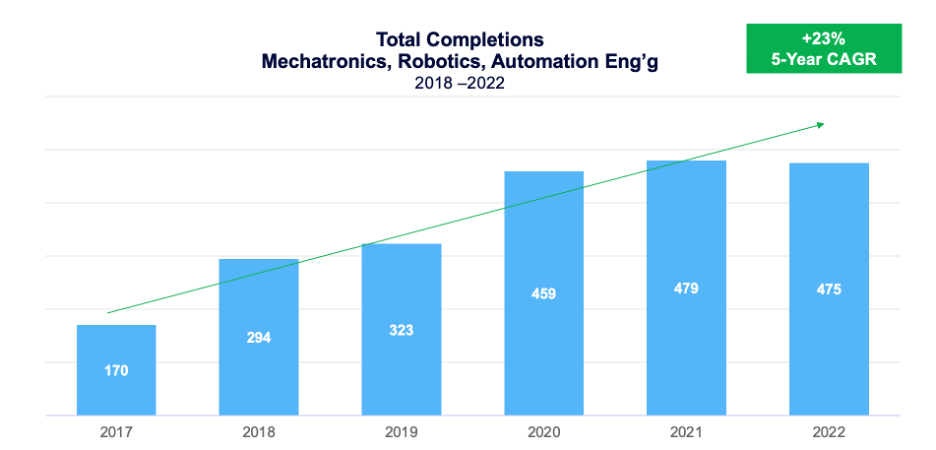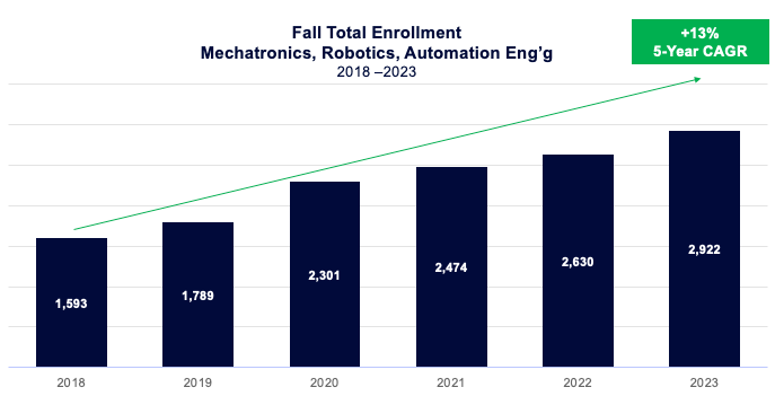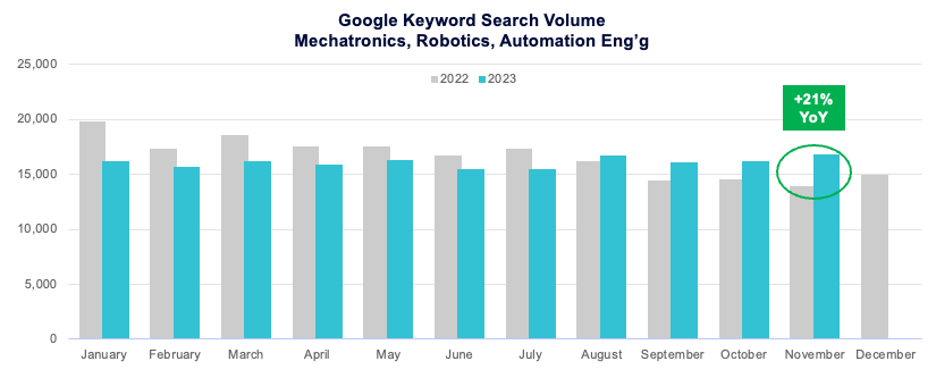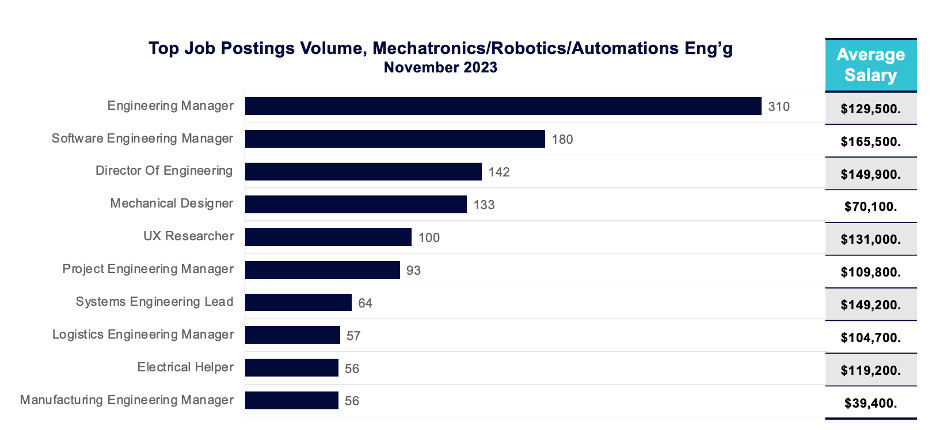When we notice that a major university launches a new mechatronics laboratory, we make a mental note. Still, we investigate when the announcement is followed by others, including a $3 million mechatronics lab announced this past fall and lauded by the governor of New York and First Lady Jill Biden. And new Mechatronics program announcements keep coming, including offers from West Virginia University and the University of Louisville.
Is Mechatronics your next big opportunity or a bucket of bolts?
To answer the question, we’ll start with an analysis of Student Demand. For past demand, we will refer to IPEDS completions (students who have completed a degree or certificate program). Then, we’ll jump to the present and examine current enrollment. Finally, we’ll peek into the possible future with Google Trends. Since Student Demand is just one piece of the puzzle, we’ll also analyze job opportunities, wages, and competition.
IPEDS Completions for Mechatronics, Robotics, and Automation Engineering
The most current IPEDS completions data is from Spring 2022; it reflects what students wanted in 2019 or 2020 when they chose their majors.
Mechatronics is a relatively small program, with 475 completions in 2022. Completions have grown an average of 23 percent annually since 2017; however, most of this growth occurred between 2017 and 2020. More recently, they are flat.

Source: Gray DI’s PES Markets
Enrollment Data: A More Recent Student Demand Indicator
Enrollment data is the most recent indicator of student demand. It is updated three times a year and indicates what students are currently interested in.
Over the last six years, enrollment in the program has increased by 13% per year. Enrollment continues to grow, which bodes well for the program.

Source: Gray DI’s PES Program Enrollment Dashboard
Healthy Keyword Searches for Mechatronics
Google keyword searches for academic programs represent what students might be interested in studying in the future. Search volume for Mechatronics declined from January through July. Since August, interest has perked up; November searches for mechatronics rose 21 percent year-over-year. Cautious optimism may be appropriate.

Source: Gray DI’s PES Keyword Search Dashboard
Jobs!
Mechatronics graduates have excellent job prospects. There are five job postings per graduate, which places the program in the top 2% of all academic programs. Starting salaries are in the 96th percentile, with a weighted average of $63,602. Salaries may go up as they advance in their careers.

Source: Gray DI’s PES Job Postings Dashboard
But What About Competition?
Only 21 campuses offer Mechatronics programs. The fact that there are no current online programs allows institutions to attract students both in and outside their market. Online programs may emerge, but required labs will be a problem.
One downside: the Google cost-per-click is $8, well above average. Targeting the right audience for such a specialized program through Google Ads will be expensive. Another issue is that the median program size is only 11 completions. This could benefit student experience and faculty-student interactions but will likely drive high costs per student credit hour (How to Manage Curricular Efficiency).
Mechatronics, Robotics, and Automation Engineering College Program At a Glance
This program has healthy student demand, job posting volumes, and wages. For the right institution, this program could be a winner! But don’t forget to get the data for your local market, which may be quite different from the national averages.




